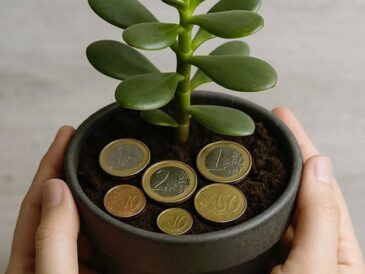Lavender is one of the most cherished aromatic herbs in the world. Its calming scent, beautiful purple blooms, and culinary and medicinal uses make it a favorite among gardeners. While lavender is often grown outdoors, it can also thrive indoors when grown in pots—with the right care and attention. Here’s a complete guide to growing lavender indoors successfully.
🌿 Why Grow Lavender Indoors?
Growing lavender indoors offers several benefits:
- Year-round access to fresh lavender regardless of the season.
- Adds a natural air freshener and improves mood.
- Keeps mosquitoes and pests at bay.
- Ideal for those with limited garden space.
🪴 1. Choose the Right Variety
Not all lavender types adapt well to indoor growing. Look for compact and dwarf varieties that thrive in containers:
- Lavandula angustifolia ‘Munstead’ – a popular English lavender variety.
- Lavandula ‘Goodwin Creek Grey’ – ideal for pots and thrives with minimal care.
- French lavender (Lavandula dentata) – a fragrant, bushy option.
Tip: English lavender is best for scent and culinary uses, while French lavender is great for warmer indoor conditions.
🌞 2. Find the Perfect Location: Light is Key
Lavender is a sun-loving plant and needs at least 6–8 hours of direct sunlight daily. Indoors, this means:
- Place it near a south-facing window.
- If natural light is limited, supplement with a grow light for at least 12 hours/day.
Fact: According to the University of Vermont Extension, insufficient light is the leading reason indoor lavender fails to bloom.
🌱 3. Select the Right Pot and Soil
- Pot: Choose a clay or terracotta pot with drainage holes. These materials help wick away moisture and prevent root rot.
- Size: Start with a pot at least 10–12 inches wide to give the roots room to grow.
- Soil: Use well-draining soil, preferably a cactus or succulent mix. You can also mix regular potting soil with sand or perlite (2:1 ratio).
Avoid overly rich soil—lavender thrives in slightly alkaline, low-nutrient conditions.
💧 4. Watering Wisely
Lavender hates “wet feet.” Here’s how to water properly:
- Allow the top 1 inch of soil to dry out before watering.
- Water thoroughly until water drains out the bottom, but don’t let it sit in a saucer.
- In winter, reduce watering to once every 2–3 weeks.
Fact: Overwatering is the most common cause of indoor lavender death. The Royal Horticultural Society advises watering only when soil feels dry.
🌬️ 5. Ensure Good Air Circulation
Lavender loves airflow. Indoors, you can:
- Keep a small fan nearby to simulate wind.
- Avoid crowding the plant with other pots or furniture.
- Ensure the room is not overly humid—lavender prefers dry air.
🌡️ 6. Maintain the Right Temperature
- Lavender grows best in temperatures between 60–70°F (15–21°C) during the day.
- It can tolerate slightly cooler nighttime temperatures (down to 50°F / 10°C).
- Keep away from heaters, air vents, and cold drafts.
✂️ 7. Pruning and Maintenance
Regular pruning keeps lavender compact and promotes flowering:
TO CONTINUE READING THE ARTICLE PLEASE SEE PAGE 2




